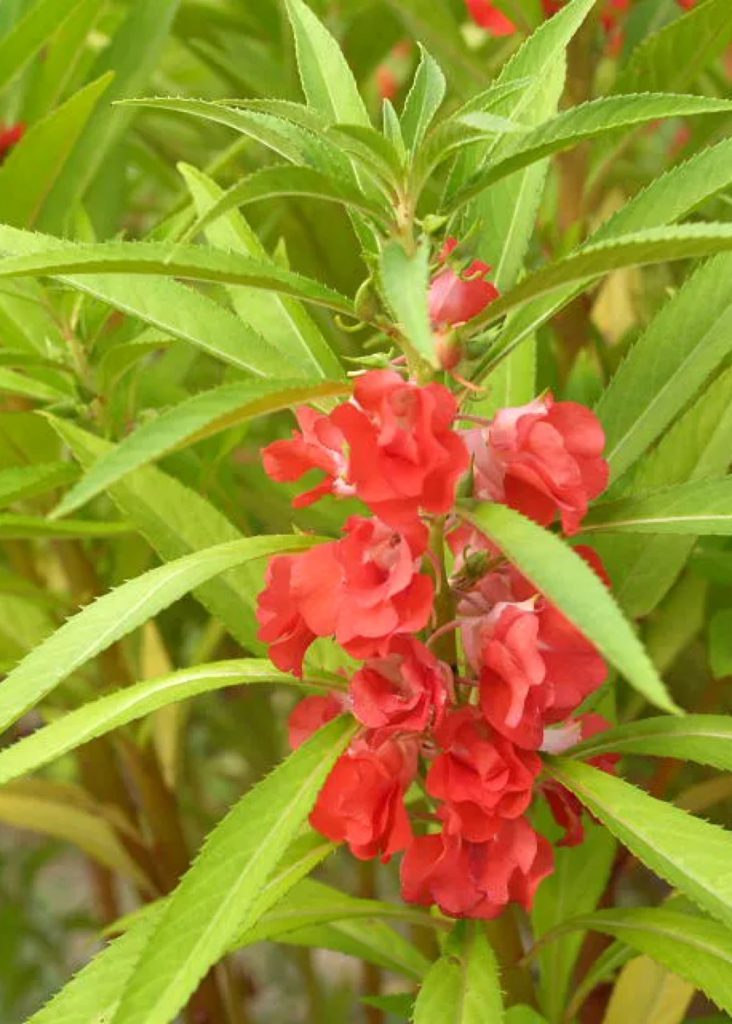
Hohsenka(鳳仙花) is derived from the Chinese word “凤仙华”. “鳳(Phoenix)” is because the shape of the flower resembles the flapping of the phoenix, which is an imaginary bird, and “仙” is taken from the hermit who appears in Chinese folk tales about phoenix flowers, In addition, Hohsenka flowers have long been used by girls to dye their nails, so they are also known as nail red (Tsumakurenai, Tsumabeni). Put the petals of impatiens balsa and a little alum in a plastic bag, crush them with a weight, apply the crushed ones to your nails, wrap them in a wrap, and leave them overnight. Your fingers will turn red and the color will not come off in about a week. Furthermore, when the black ripe fruit of Hohsenka is touched, the seeds are characterized by popping far away. It is the wisdom of Hosenka to prevent it from growing poorly in the same soil.
鳳仙花は中国語「鳳仙華」に由来します。「鳳」は、花の形が想像上の鳥である鳳凰の羽ばたく姿に似ていることから、「仙」は、鳳仙花にまつわる中国の昔話に登場する仙人から取られました。また、鳳仙花は昔から女の子が爪を染めるのに使ったため、爪紅(ツマクレナイ、ツマベニ)と言う別名があります。ホウセンカの花弁とミョウバン少々をビニール袋に入れて重しなどで潰し、潰したものを爪に塗り、ラップで包んで一晩ほどおいたら指が紅く染まり、1週間ほどで色が抜けません。さらに、鳳仙花の黒く熟した実に触れると、種が遠くへ弾け散る特徴があります。同じ土壌では育ちが悪くなるのを防ぐ為の鳳仙花の知恵です。
